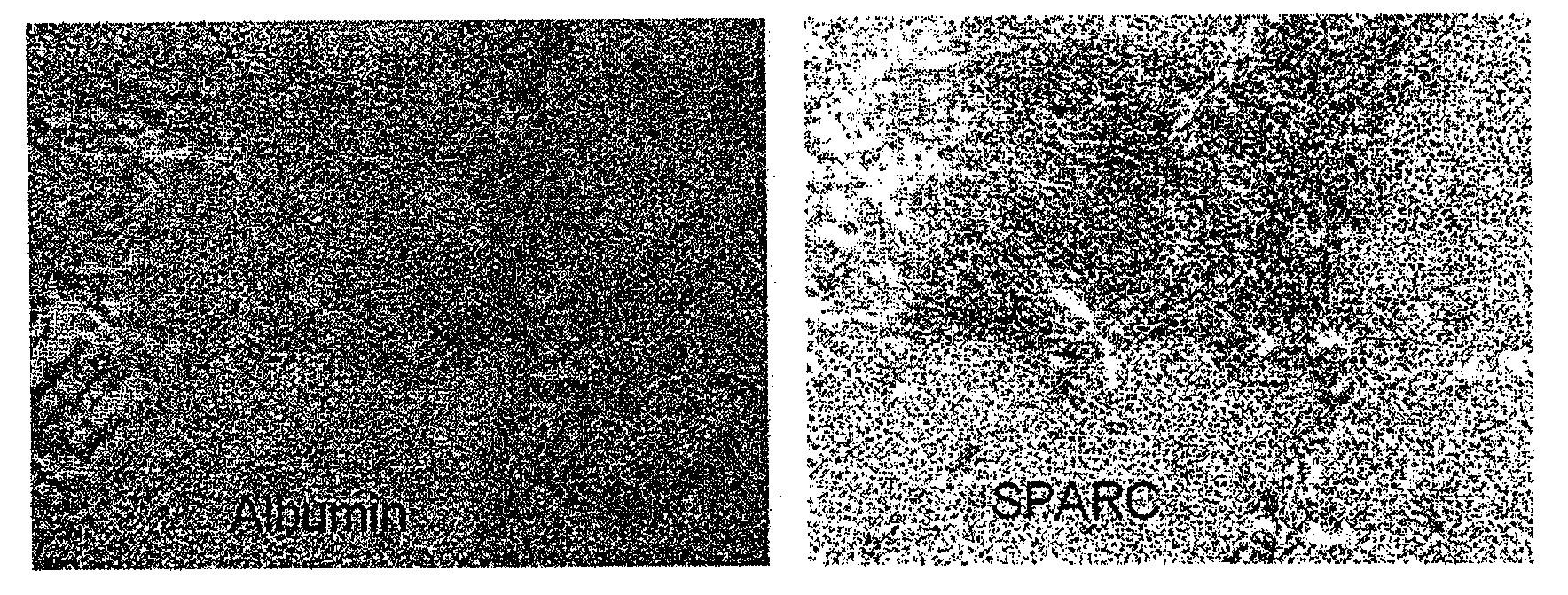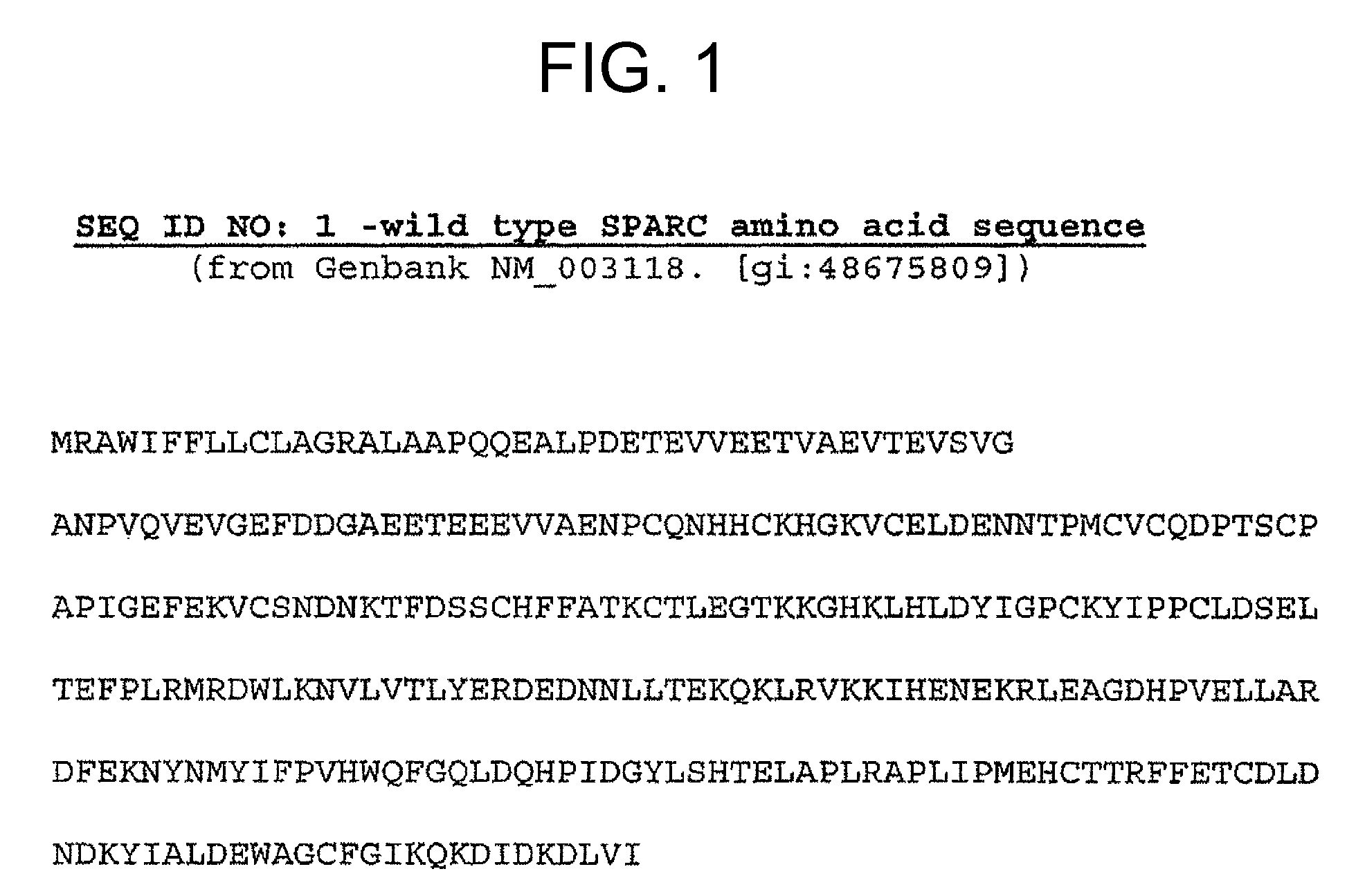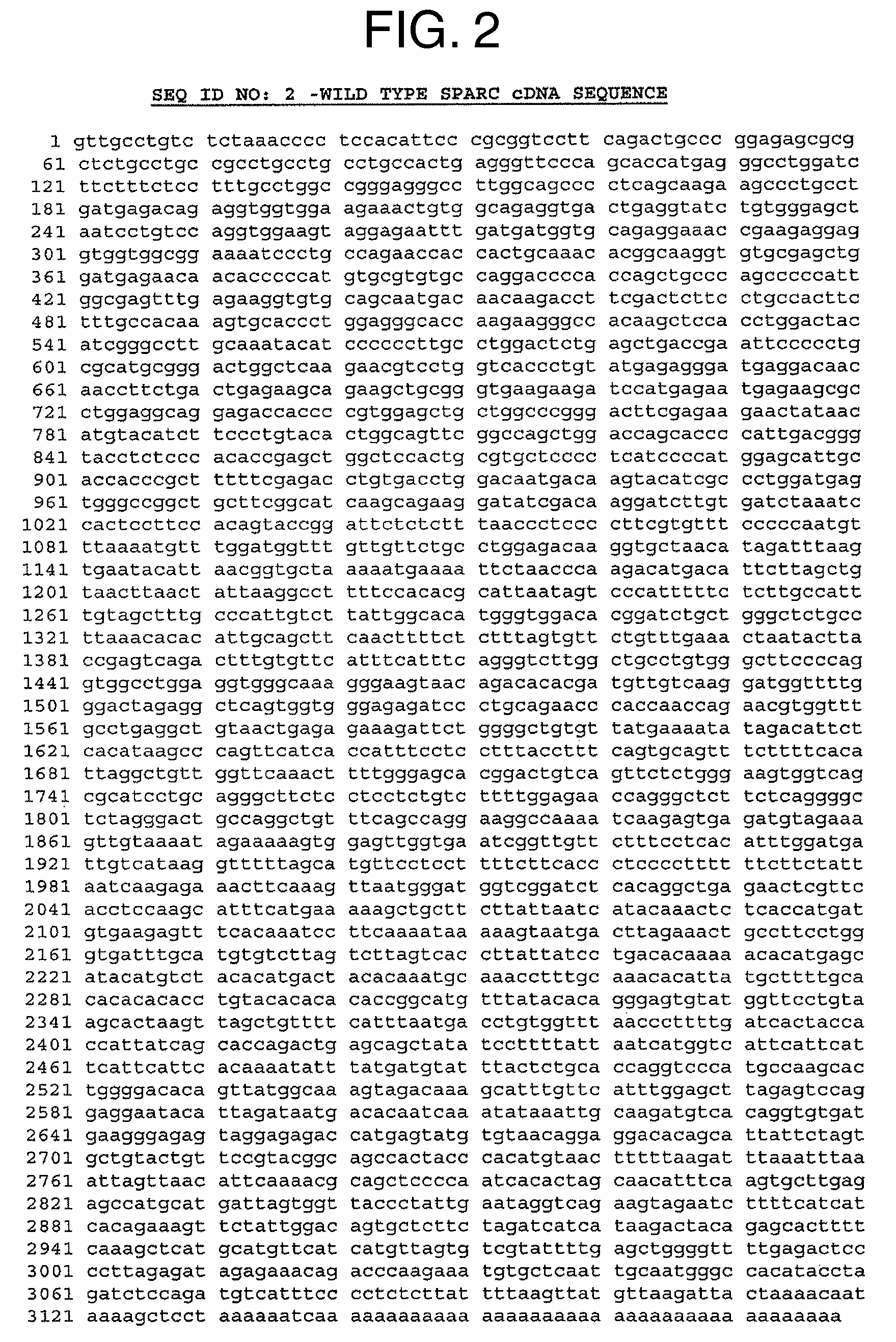Sparc and methods of use thereof
a technology of paclitaxel and saline, applied in the field of cancer treatment, can solve the problems of colloid formation when reconstituted with saline, poor solubility of paclitaxel,
- Summary
- Abstract
- Description
- Claims
- Application Information
AI Technical Summary
Benefits of technology
Problems solved by technology
Method used
Image
Examples
example 1
[0100]This example illustrates the co-localization of SPARC with albumin in an MX-1 tumor xenograft.
[0101]Paclitaxel albumin nanoparticles (Abraxane, ABX or ABI-007) have been shown to have an improved response rate over Taxol (TAX) in a Phase 3 metastatic breast cancer trial (33% vs. 19%, pJ. Biol. Chem., 269, 6072-82 (1994)).
[0102]The MX-1 tumor cell line is derived from a human breast cancer. Serial cryosections of human MX-1 tumor xenograft, human primary breast tumor tissues (n=141), and normal human breast tissue (n=115) were immunostained and scored (0-4) for albumin, SPARC (using anti-SPARC antibody), and caveolin-1 staining. Cultured MX-1 cells also were immunostained for SPARC. Paclitaxel albumin nanoparticles (Abraxane, ABX or ABI-007) and Taxol (TAX) were prepared with radioactive paclitaxel (P) (20 mg / kg IV), and were used to determine the biodistribution of paclitaxel in normal tissues of athymic nice.
[0103]Albumin staining in the MX-1 tumor was focal and co-localized ...
example 2
[0105]This example illustrates the expression of SPARC in MX-1 tumor cells.
[0106]MX-1 cells were cultured on a coverslip and stained with an antibody directed against human SPARC using methods known in the art. Antibody staining was observed, which demonstrates that MX-1 is expressing SPARC. These results suggest that SPARC expression detected in MX-1 tumor cells is a result of SPARC secretion by MS-1 tumor cells. Staining was more intense for MX-1 tumor cells than that of normal primary cells such as HUVEC (human umbiblical vein endothelial cells), HLMVEC (Human lung microvessel endothelial cells), and HMEC (Human mamiary epithelial cells). Though the majority of the SPARC staining was internal SPARC, significant level of surface SPARC was detected as demonstrated by confocal miscroscopy and staining of unpermeabilized cells.
example 3
[0107]This example illustrates the overexpression of SPARC protein in human breast carcinoma cells.
[0108]SPARC expression in human breast carcinoma cells was determined using a tumor array from Cybrdi, Inc. (Gaithersburg, Md.). The results of this analysis are set forth in Table 1. Intensity of staining was scored from “Negative” to 4+, with the higher number corresponding to greater intensity of overexpression. 49% of breast carcinoma stained positive (2+ and above) for SPARC, as compared to 1% of normal tissue (p<0.0001).
SPARC Staining (%)Negative− / +1+2+3+4+Carcinoma3114111925Cells (34%) (15%) (1%) (12%) (10%) (27%)Normal93 74 10 0Cells (89%) (7%) (4%) (1%) (0%) (0%)
PUM
| Property | Measurement | Unit |
|---|---|---|
| Fraction | aaaaa | aaaaa |
| Fraction | aaaaa | aaaaa |
| Fraction | aaaaa | aaaaa |
Abstract
Description
Claims
Application Information
 Login to View More
Login to View More - R&D
- Intellectual Property
- Life Sciences
- Materials
- Tech Scout
- Unparalleled Data Quality
- Higher Quality Content
- 60% Fewer Hallucinations
Browse by: Latest US Patents, China's latest patents, Technical Efficacy Thesaurus, Application Domain, Technology Topic, Popular Technical Reports.
© 2025 PatSnap. All rights reserved.Legal|Privacy policy|Modern Slavery Act Transparency Statement|Sitemap|About US| Contact US: help@patsnap.com



